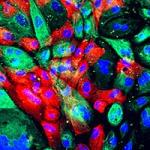
Research Topics
Our primary aim is to understand the normal and pathological roles of sphingolipids and to develop effective therapies for diseases related to sphingolipid metabolism.
Current Research
Sphingolipids, named after the enigmatic Sphinx of Greek mythology due to their mysterious properties, play a crucial role in cellular biology. They are essential components of cell membranes and also act as signaling molecules that regulate key functions within the vascular, nervous, and immune systems.
Sphingolipid metabolism is implicated in several human diseases, most notably in a group of inherited lysosomal storage disorders. These disorders, characterized by impaired degradation of sphingolipids, often lead to rare neurodegenerative conditions. Notable examples include Tay-Sachs disease, Sandhoff disease, Gaucher disease, Fabry disease, Krabbe disease, Farber disease, and GM1 gangliosidosis. Moreover, gene defects affecting sphingolipid metabolism have been linked to more common neurodegenerative disorders, such as Parkinson's disease.
In our lab, we explore the functions of sphingolipids in both normal and diseased states through genetic approaches in mice and in patient cells. Our ultimate goal is to develop therapeutic strategies for sphingolipid metabolism disorders.
Applying our Research
Understanding the biological functions of sphingolipid metabolism is crucial, as its significance in human disease is increasingly recognized. Gaining deeper insights into sphingolipid metabolism holds promise for the development of innovative treatments for various human diseases.
Need for Further Study
- Elucidating how altered sphingolipid metabolism leads to disease.
- Developing effective treatments for patients with sphingolipid metabolism disorders.
Biography
- NRSA Postdoctoral Fellow, NIDDK, 1981-1983, Advisor: Dr. Elizabeth F. Neufeld
- Ph.D., University of Texas Southwestern Medical Center, 1980
- B.S., Bates College, 1976
Selected Publications
- Allende ML, Lee YT, Byrnes C, Li C, Tuymetova G, Bakir JY, Nicoli ER, James VK, Brodbelt JS, Tifft CJ, Proia RL. Sialidase NEU3 action on GM1 ganglioside is neuroprotective in GM1 gangliosidosis. J Lipid Res. 2023;64(12):100463.
- Duffy HBD, Byrnes C, Zhu H, Tuymetova G, Lee YT, Platt FM, Proia RL. Deletion of Gba in neurons, but not microglia, causes neurodegeneration in a Gaucher mouse model. JCI Insight. 2024;9(21).
- Zhu H, Lee YT, Byrnes C, Angina J, Springer DA, Tuymetova G, Kono M, Tifft CJ, Proia RL. Reactivation of mTOR signaling slows neurodegeneration in a lysosomal sphingolipid storage disease. Neurobiol Dis. 2025;204:106760.
Related Scientific Focus Areas


Molecular Biology and Biochemistry
View additional Principal Investigators in Molecular Biology and Biochemistry


This page was last updated on Tuesday, November 25, 2025